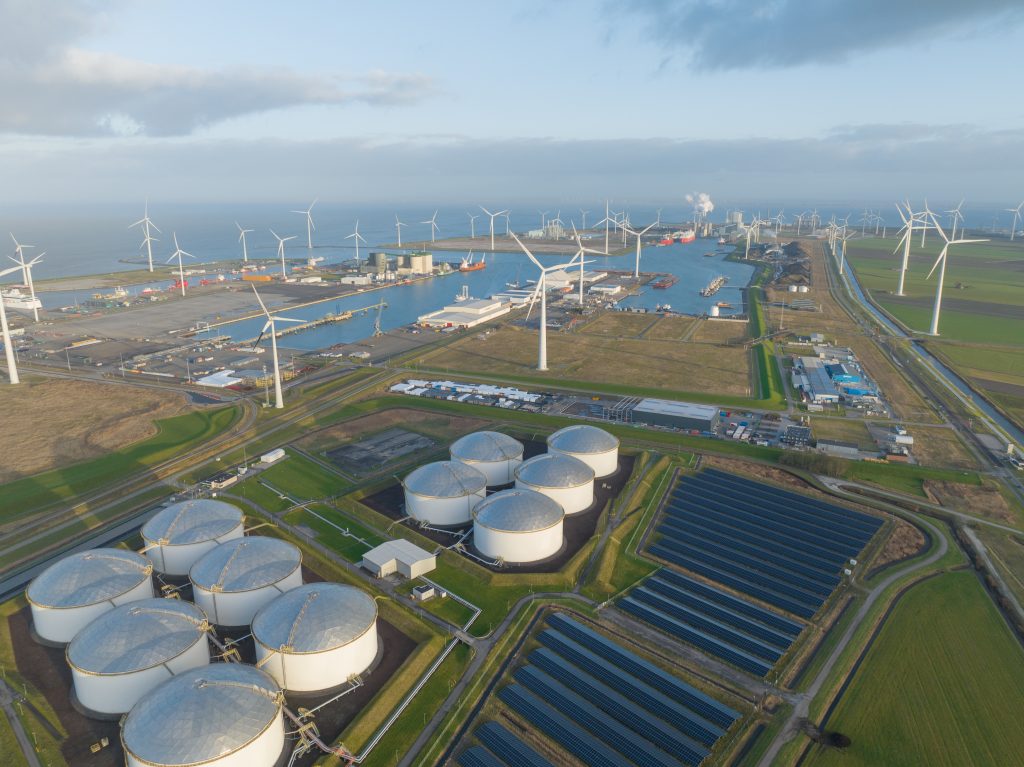The energy transition can proactively shape a more equal and inclusive world
Damilola Ogunbiyi is the CEO and Special Representative of the UN Secretary-General for Sustainable Energy for All, and Co-Chair of UN-Energy. This essay is part of the Global Energy Agenda.
Energy is a complex issue in the developing world. In Africa and Asia, for instance, we have growing energy demand, insufficient energy infrastructure, and major constraints on financing energy system development. So how can the Global South countries tackle these enormous challenges and still meet their net-zero imperative? We must turn this equation on its head and move beyond ambition to action by putting in place concrete measures to achieve both.
As you read this, billions of people do not have access to the minimum modern energy level required to live healthier, more productive, and dignified lives. Six hundred and seventy-five million people remain without access to electricity, while 2.3 billion still cook with rudimentary technologies and highly harmful fuels.
The energy transition can be a moment where we intentionally and holistically shape a more equal and inclusive world. We can turn energy poverty into an opportunity to transform entire nations and subregions, bringing hope and prosperity.
Indeed, studies show that up to $5 trillion can be added to the economies of low-income countries by providing clean and affordable energy to those without it. At the same time, the energy transition provides investment opportunities in these emerging economies and developing nations, underpinned by growing energy demand. For example, Ghana recently launched the Ghana Energy Transition and Investment Plan, which shows that a $550 billion opportunity exists for the international community to invest in the country’s sustainable development.

The energy transition can be a moment where we intentionally and holistically shape a more equal and inclusive world. We can turn energy poverty into an opportunity to transform entire nations and subregions, bringing hope and prosperity.
The clean energy transition is already underway
Technological developments, falling costs, innovative approaches, and digitalization are opening new avenues for accelerating the energy transition and spurring greater adoption of renewables. Global renewable capacity additions continue to soar with cumulative capacity expected to reach over 4,500 gigawatts (GW) by the end of 2024, equal to the total power capacity of China and the United States combined. By 2027, it is expected that solar photovoltaics’ installed power capacity will surpass that of coal, becoming the largest renewable energy source in the world.
With this growing momentum, there is a massive opportunity in many developing regions to directly invest in renewable energy technologies. I can give the example of Freetown, the capital city of Sierra Leone, where the transport sector has a significant impact on the air quality, accounting for 31 percent of total municipal greenhouse gas emissions. The city’s leadership is currently undertaking a feasibility study to use a solar-powered cable car that will cut the commute of residents needing to cross the city from two hours to twenty minutes. This would reduce the chronic traffic congestion in the city and corresponding emissions, and improve the quality of life for the residents of Freetown.
The acceleration toward renewable energy sources is also essential for long-term energy security, price stability, and national resilience. The ongoing energy crisis has shown us just how vulnerable many of us are. It is estimated that up to 80 percent of the global population lives in countries that are net energy importers. There is, therefore, a need for a profound shift that would lessen the dependence on energy imports for many countries.
Achieving the dual targets of energy transition and energy access
One thing that is absolutely clear is that the energy demand in developing countries is rapidly increasing, and if we do not urgently redesign the ways in which energy is produced, consumed, and financed, especially in emerging economies, we will fail in our quest to achieve a truly global clean energy transition.
With the growing demand for clean energy across the world, there is no reason why countries in Africa and Southeast Asia that have abundant natural resources such as critical minerals cannot set up local manufacturing to produce cost-competitive products to serve their own needs while also supporting the needs of the global energy transition. For example, it is projected that renewable energy manufacturing in Southeast Asia can generate up to $100 billion in sustainable revenue by 2030, with a potential 6 million renewable energy jobs to be created by 2050. It is for this reason that Sustainable Energy for All (SEforALL) and its partners are championing the Renewable Energy Manufacturing Initiative, which aims to drive investment and mobilize action in developing countries to scale up renewable energy manufacturing capabilities.
Moreover, many of the countries that currently face energy access challenges have some of the ingredients to build a globally competitive renewable energy ecosystem. These ingredients include growing demand, natural resources, trade partnerships, and many supporting tools and incentives. However, inadequate financing continues to hamper progress; clean energy investment is not going to the countries and regions with the largest deficit. For example, Sub-Saharan Africa received less than 1.5 percent of the amount invested globally between 2000 and 2020.
We must find ways to reform the current international financial architecture, which is fragmented and offers insufficient solutions, to ensure that funding is deployed to developing countries at scale and in ways that do not add more pressure to debt-burdened nations. I am particularly glad that this discussion has now taken center stage and there is growing consensus on the need for urgent reform.
The urgency of the energy issues we face does not provide us with the luxury of time; We must quickly find ways to deliver affordable, reliable, and clean energy while accelerating the transition to cleaner renewable energy sources.
I do see an opportunity to develop innovative and holistic solutions that move private capital at scale, such as through creative finance arrangements, including concessional finance and blended finance. At SEforALL, we are showcasing how results-based finance can significantly accelerate and scale up energy access through private sector interventions. I do hope that this can serve as a model to ensure the faster deployment of end-user electricity connections and clean cooking solutions across the globe.
Transformational changes are required
The solutions I have highlighted speak to an opportunity to also change the mindset that tells us we cannot solve the challenges we face, or that we have to wait to have a perfect solution that can work for our unique environments and contexts.
The urgency of the energy issues we face does not provide us with the luxury of time; we must quickly find ways to deliver affordable, reliable, and clean energy while accelerating the transition to cleaner renewable energy sources. This will help us foster a more equitable and inclusive world.
All essays
Related program

The Global Energy Center develops and promotes pragmatic and nonpartisan policy solutions designed to advance global energy security, enhance economic opportunity, and accelerate pathways to net-zero emissions.
Image: Aerial drone video of oil storage silos and solar panels coexisting (Credit: Make more aerials, Shutterstock)

